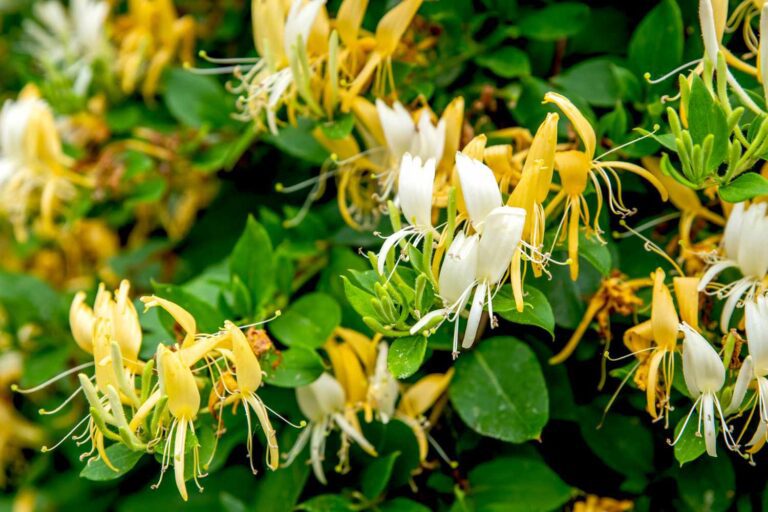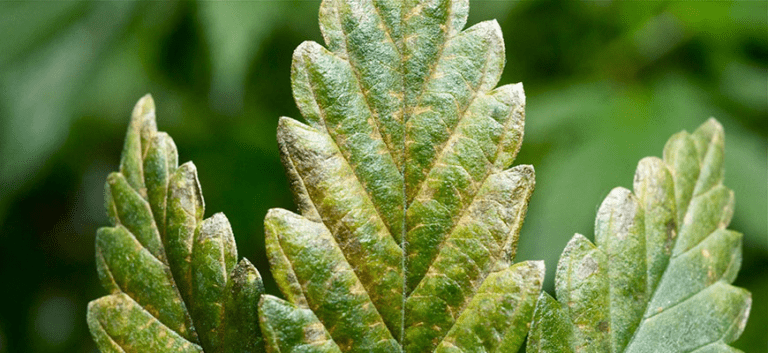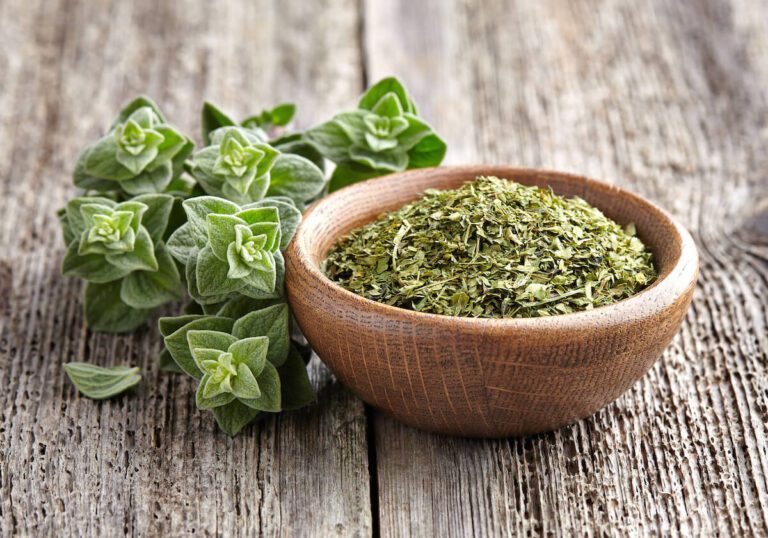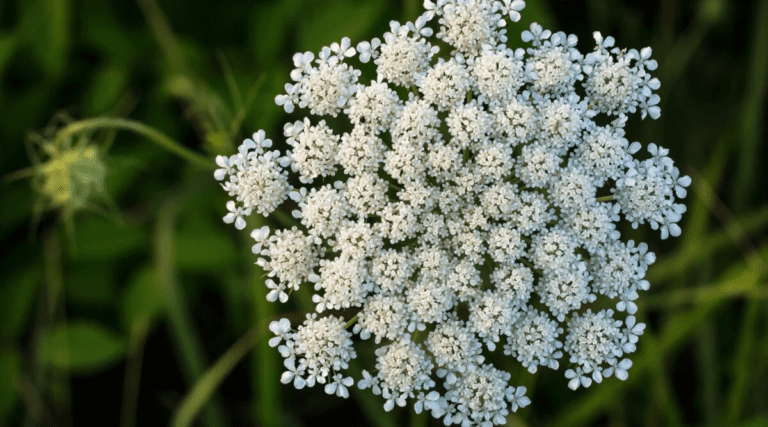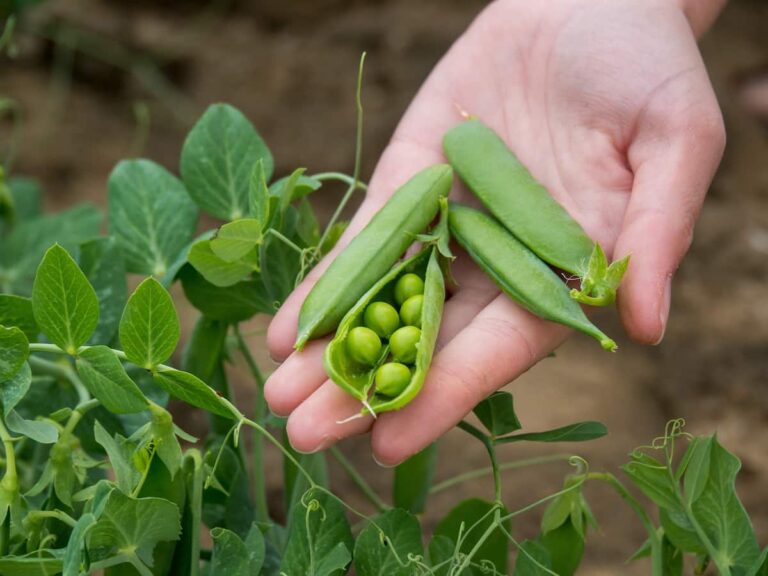Planting, Growing, and Caring for Lupine Flowers
Lupine flowers, with their vibrant colors and striking spires, are a garden favorite across the United States. Have you ever wondered how to cultivate these beauties in your own backyard? From planting to caring for them, the journey of nurturing lupines is both rewarding and enchanting. In this blog, we delve into the art of growing lupine flowers, sharing expert tips and insights to help you create a stunning floral display.
Whether you’re a seasoned gardener or just starting out, this guide will equip you with the knowledge needed to cultivate these stunning blooms successfully. Get ready to transform your garden into a lupine paradise!
Table of Contents
Benefits of Growing Lupine Flowers
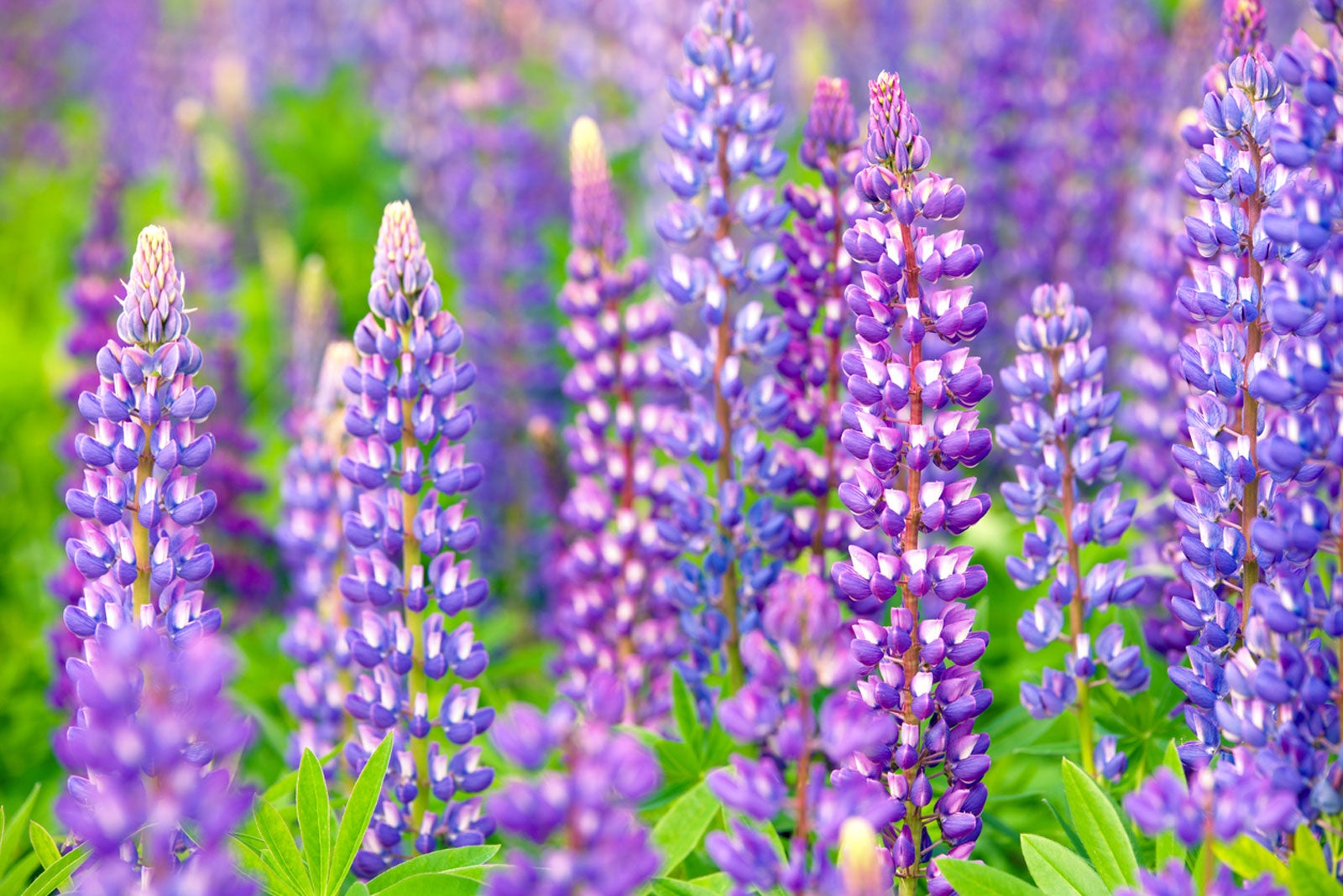
Lupine flowers are a delightful addition to any garden, offering a range of benefits beyond their aesthetic appeal. Here are the benefits of growing lupine flowers in your garden:
- Pollinator Attraction: Lupines attract bees and butterflies, promoting pollination and supporting biodiversity.
- Nitrogen Fixation: These plants convert atmospheric nitrogen into a usable form, enhancing soil fertility.
- Natural Pest Control: Lupines produce alkaloids that repel certain insects, acting as an eco-friendly pest deterrent.
- Overall Garden Health: Incorporating lupines contributes to a more sustainable and thriving ecosystem.
Remember, these vibrant blooms not only add visual appeal but also play a vital role in maintaining a healthy garden. 🌼🐝🦋
Ideal Soil Conditions for Lupine Flowers
Lupine flowers, with their vibrant colors and striking spire-like blooms, are a favorite among gardeners looking to add beauty and diversity to their landscapes.
- Soil Conditions:
- Well-Draining Soil: Lupines thrive in well-draining soil.
- pH Range: Soil pH should be slightly acidic to neutral (6.0 to 7.0).
- Texture: Prefer sandy or loamy soil.
- Organic Matter: Rich soil with organic matter promotes healthy root development.
- Air Circulation:
- Avoid compacted soil to ensure good air circulation around the roots.
- Enhanced air flow contributes to overall plant health and vigor.
Remember these tips, and your lupine flowers will flourish! 🌱🌸🌿 .
Choosing the Right Location for Planting Lupine Flowers
When it comes to choosing the right location for planting lupine flowers, there are a few key factors to consider to ensure optimal growth and blooming.
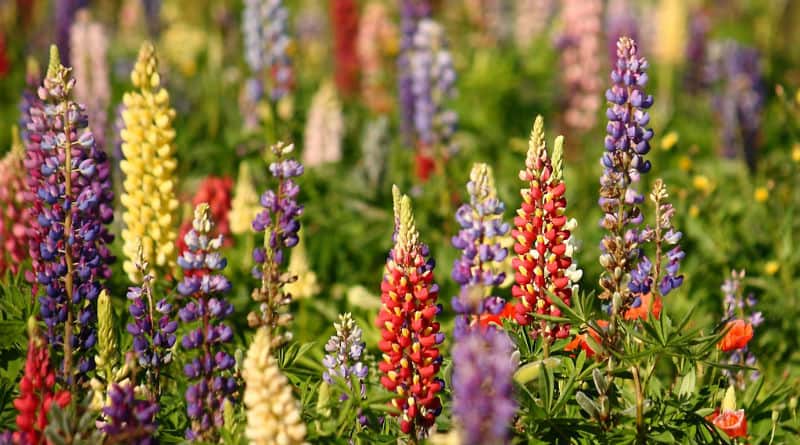
By carefully considering these factors, you’ll create a favorable environment for your lupine flowers to flourish and contribute to a beautiful garden. 🌼🌿
Preparing the Soil for Lupine Flower Planting
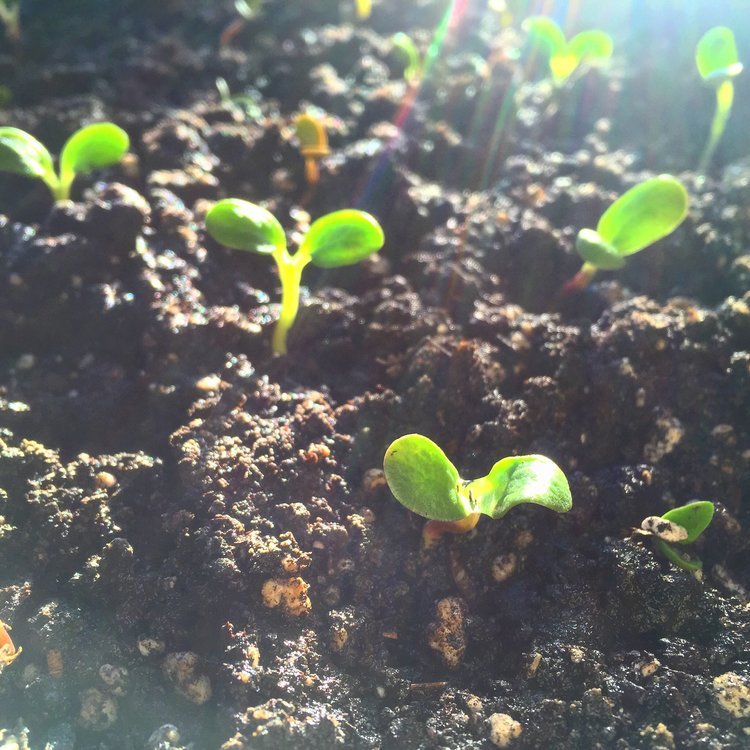
To prepare the soil for planting lupine flowers, it is essential to ensure that the planting area has well-draining soil with a slightly acidic to neutral pH level.
- Soil Preparation:
- Incorporate compost or aged manure to enrich the soil with nutrients.
- Loosen the soil to a depth of about 12 inches for strong root development.
- Remove weeds and debris to prevent competition for nutrients and sunlight.
- Clean Planting Bed:
- Clear the area of obstacles to give lupines the best chance to establish themselves.
- Proper soil preparation creates an ideal environment for thriving lupine flowers.
The following table explains about the preparing the soil for lupine flower planting:
| Soil Preparation Treatment | Treatment Description | Quantitative Effect |
|---|---|---|
| 1. Soil Testing | – Conduct soil test to assess pH and nutrient levels. | – pH adjustment: Add lime to achieve pH 6.0-7.0. |
| – Nutrient supplementation based on test results. | ||
| 2. Organic Matter Addition | – Incorporate compost or well-rotted manure into soil. | – Add 1-2 inches of compost per square foot. |
| – Improve soil structure and water retention. | ||
| 3. Mulching | – Apply mulch to retain soil moisture and suppress weeds. | – Spread 2-3 inches of mulch around plants. |
| – Reduce soil moisture evaporation by 25-50%. | ||
| 4. Fertilizer Application | – Apply balanced fertilizer with N-P-K ratio of 10-10-10. | – Apply 1-2 tablespoons per square foot of area. |
| – Promote healthy plant growth and blooming. | ||
| 5. Soil Aeration | – Loosen compacted soil with a garden fork or tiller. | – Till soil to a depth of 6-8 inches. |
| – Improve root penetration and oxygenation. |
Happy gardening, and may your lupines bloom beautifully! 🌱🌸🌿 .
Different Varieties of Lupine Flowers
Lupine flowers come in a fascinating array of varieties, each adding a unique charm to garden landscapes.Let’s explore various lupine varieties, along with their advantages, disadvantages, and key characteristics:
| Variety | Advantages | Disadvantages | Characteristics |
|---|---|---|---|
| White Lupine | – Used as a green manure crop. | – Annual cultivation. | – Maximum height of 4 feet. – White flowers. |
| Tree Lupine | – Tolerates salty air in coastal gardens. | – Short-lived. – Vigorous growth. | – Also known as Yellow Bush Lupine or Coastal Bush Lupine. – Can grow up to 8 feet. – Fragrant buttery yellow blooms in 12-inch racemes. |
| Lavender Spires | – Fragrant blossoms with lavender wings and darker purple banners. | – Requires pruning for optimal growth. | – Tree lupin cultivar. – Height up to 8 feet. – Ideal for cottage-style or coastal gardens. |
| Snow Queen | – Masses of lightly fragranced white flowers. | – Can become leggy if not pruned. | – Another tree lupin variety. – Silvery purple flush on mature blooms. – Attracts pollinators. – Grows up to 8 feet. |
| Silvery Lupine | – Fast-spreading species that readily forms colonies. | – May be invasive in some regions. | – Native to the southwestern US. – Spikes up to 8 inches high. – Violet blooms with a white center on banners. |
| Garden Lupine | – Blue, pink, and purple flowers. | – Prefers moist environments. | – Native to much of western North America. – Herbaceous perennial. |
| Hybrid Lupines | – Maximizes flower color and vigor. | – Hundreds of species within the genus. | – Bred from various native species. – Pea-like flowers in many colors (white, pink, purple, blue, multicolored). – Popular for cottage-style beds, borders, and containers. – Nitrogen-fixers beneficial for soil health. – Toxic if ingested. |
| Wild Lupine | – North American native. | – Blue, white, or yellow flowers. | – Wild species suitable for gardens. |
Remember that lupines are not only visually appealing but also contribute to soil health and attract pollinators. However, be cautious as they are toxic to humans and animals. 🌼🦋🌿
Best Practices for Watering Lupine Flowers

To ensure the optimal growth and health of your lupine flowers, it is vital to follow best practices for watering.
Remember, healthy lupine flowers contribute to a vibrant garden ecosystem. Happy gardening! 🌼🌿
Fertilizing Lupine Flowers for Optimal Growth
Fertilizing lupine flowers is essential for promoting optimal growth and vibrant blooms.

- Choose a balanced formula: Select a balanced fertilizer that provides essential elements such as nitrogen, phosphorus, and potassium, along with micronutrients like iron and magnesium, to meet the specific nutrient needs of lupine flowers.
- Timing of application: Apply fertilizer in early spring as new growth emerges to support the development of healthy plants. Additionally, apply a lighter application during the blooming period to support flower production.
- Avoid over-fertilization: Be cautious not to over-fertilize lupine flowers, as this can lead to excessive foliage growth at the expense of blooms. Follow recommended dosages and avoid using high-nitrogen fertilizers that can cause leggy growth.
- Follow recommended dosages: Adhere to recommended dosages provided on the fertilizer packaging to ensure proper nutrient uptake by the plants and to avoid adverse effects of over-fertilization.
- Promote full beauty: With proper fertilization, lupine flowers can thrive and display their full beauty in the garden, producing abundant blooms and healthy foliage.
The following table explains about fertilizing lupine flowers:
| Fertilizer Treatment | Application Rate | Effect on Growth |
|---|---|---|
| 1. Nitrogen (N) | 20-30 g per plant | Stimulates foliage and stem growth. |
| 2. Phosphorus (P) | 15-20 g per plant | Enhances root development and flowering. |
| 3. Potassium (K) | 10-15 g per plant | Promotes overall plant vigor and resilience. |
| 4. Complete NPK Fertilizer | As directed on package | Provides balanced nutrition for growth. |
Common Pests and Diseases Affecting Lupine Flowers
Lupine flowers are indeed hardy and beautiful additions to gardens, but like any plants, they can face challenges. Let’s delve into the pests and diseases that can impact lupines:
- Pests:
- Aphids: These tiny insects feed on the sap of lupine plants. If left unchecked, they can cause significant damage. Regular inspection and early intervention are crucial.
- Spider Mites: These pests create fine webbing on leaves and stems, affecting photosynthesis. Keep an eye out for signs like yellowing leaves and distorted growth.
- Diseases:
- Powdery Mildew: A common fungal infection that appears as a white powdery substance on leaves. It weakens the plant over time. To prevent it, ensure good air circulation and avoid overhead watering.
- Root Rot: Occurs in poorly-draining soil or during excessive rainfall. It leads to root decay, stunted growth, and wilting. Well-drained soil is essential.
Tips for Management:
- Regularly inspect your lupine plants for signs of pests or diseases.
- Prune affected parts promptly to prevent spread.
- Avoid overwatering and ensure proper drainage.
- Consider using organic pest control methods such as neem oil or insecticidal soap.
- Rotate crops to prevent disease buildup in the soil.
Remember, a vigilant and caring approach will help your lupine flowers thrive! 🌼🌿
Propagating Lupine Flowers through Seeds
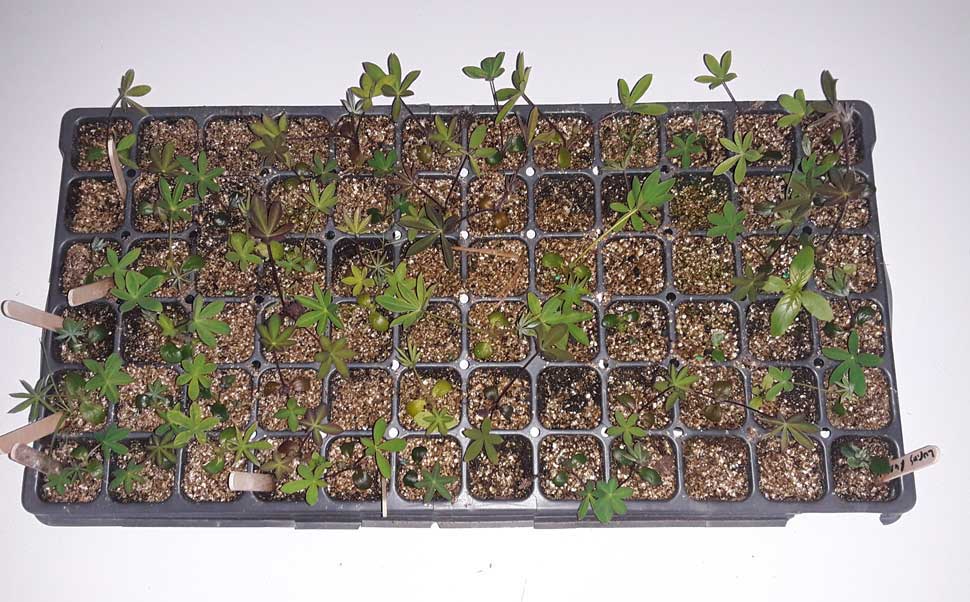
Propagating lupine flowers through seeds is a rewarding way to expand your garden and enjoy the beauty of these vibrant blooms.To propagate lupine flowers through seeds, follow these steps:
- Seed Collection: Allow lupine flowers to mature on the plant until they dry out and start to split open. Harvest the seeds by gently removing them from the pods.
- Seed Preparation: Clean the seeds by removing any debris or chaff. Lupine seeds do not require stratification (cold treatment) before planting.
- Planting: Sow the lupine seeds directly into well-draining soil in the garden or containers. Press the seeds lightly into the soil surface and water gently.
- Germination: Keep the soil consistently moist but not waterlogged until germination occurs, which usually takes 14-21 days.
- Care: Once seedlings emerge, provide them with adequate sunlight and water as needed to establish healthy plants.
By following these steps, you can successfully propagate lupine flowers through seeds.
I recently purchased these trays from Amazon, and they’ve been a game-changer for my gardening endeavors. As an enthusiastic plant lover, I’ve used them extensively for various purposes.The quality and durability of these trays impressed me. Made from sturdy plastic, they’ve survived accidental drops and multiple uses without any issues.
The size and capacity are perfect for starting seeds. With 72 cells per tray, I can nurture a wide variety of plants simultaneously. The uniform cell spacing ensures consistent growth.The inclusion of drainage holes is a thoughtful feature. Proper drainage prevents waterlogged soil, maintaining ideal moisture levels for seedlings.
These trays are easy to handle, lightweight, and stackable. Whether I’m sowing seeds or propagating cuttings, they make the process efficient.Considering their affordability, these trays are a smart investment for any gardener. Whether you’re a beginner or seasoned pro, they’re a must-have.In summary, the Plant Growing Trays with Drain Holes have become an indispensable part of my gardening routine. They are highly recommended from my side!
- Durable Material: Made of durable plastic, ensuring longevity and reusability.
- Drainage Holes: Equipped with drainage holes, allowing excess water to drain out, which is crucial for plant health, especially in hydroponic systems.
- Versatility: Suitable for various gardening purposes, including seed starting, indoor gardening, growing microgreens, and wheatgrass.
- Reusable: These trays are reusable, making them environmentally friendly and cost-effective in the long run.
- Perfect Size: Sized at approximately 21″ by 11″ on the top and 20″ by 10″ at the bottom, accommodating standard grow pads and mats perfectly.
- Ideal for Hydroponics: Well-suited for hydroponic growing methods, offering a convenient solution for enthusiasts.
- Mixed Reviews on Quality: While some users find the trays sturdy and durable, others express concerns about their sturdiness and durability, indicating mixed opinions on product quality.
- Some Stability Issues: A few users mention that the trays are not as stable as desired, requiring additional trays for stability, especially when fully loaded with soil or plant plugs.
- Not Suitable for Some Plants: The depth of the trays might not be suitable for certain types of plants, as mentioned by a user who needed shallower pans for their plants.
- Fit Issues: Some users report issues with the product dimensions, such as not fitting standard trays properly, which could affect functionality and usability.
Propagating Lupine Flowers through Division
Dividing lupine plants is a practical method for propagating these beautiful flowers in your garden. Here’s how to do it effectively:
- Prepare:
- Choose a time when the lupine plant is not actively flowering (usually early spring or fall).
- Have your gardening tools ready: a spade or garden fork, pruners, and a watering can.
- Dig Up the Plant:
- Carefully dig up the entire lupine plant, ensuring you get as much of the root system as possible.
- Lift the plant gently to avoid damaging the roots.
- Separate Clumps:
- Once the plant is out of the ground, gently separate the clumps into smaller sections.
- Each division should have its own set of roots and shoots.
- Replant:
- Choose a new location in your garden with similar growing conditions (full sun, well-drained soil).
- Replant the divisions at the same depth they were originally growing.
- Water thoroughly to help them establish in their new spot.
- Benefits of Division:
- Overcrowded Clumps: Dividing lupines rejuvenates overcrowded clumps, allowing for better air circulation and nutrient absorption.
- Revitalize Older Plants: It helps invigorate older lupine plants that may be dwindling in bloom and vigor.
Remember to care for your newly divided lupine plants, and they’ll reward you with vibrant blooms year after year! 🌼
I recently acquired the Fiskars Ergo Scratch Tool Garden Weeder to tackle persistent weeds in my garden. The weeder feels sturdy, with an ergonomic handle providing a comfortable grip. Its sharp tines effectively penetrate the soil, allowing precise weeding around delicate plants. Additionally, the bent design and heavy-duty body facilitate root removal, making it a valuable tool for maintaining weed-free areas. Overall, I’m pleased with its performance and recommend keeping it handy in your garden shed! 🌱🌿🌿
✅ Effective Cultivation: Helps loosen soil and prepare it for planting.
❌ Single Purpose: Doesn’t serve multiple gardening functions.
Pruning Lupine Flowers for Health and Aesthetics
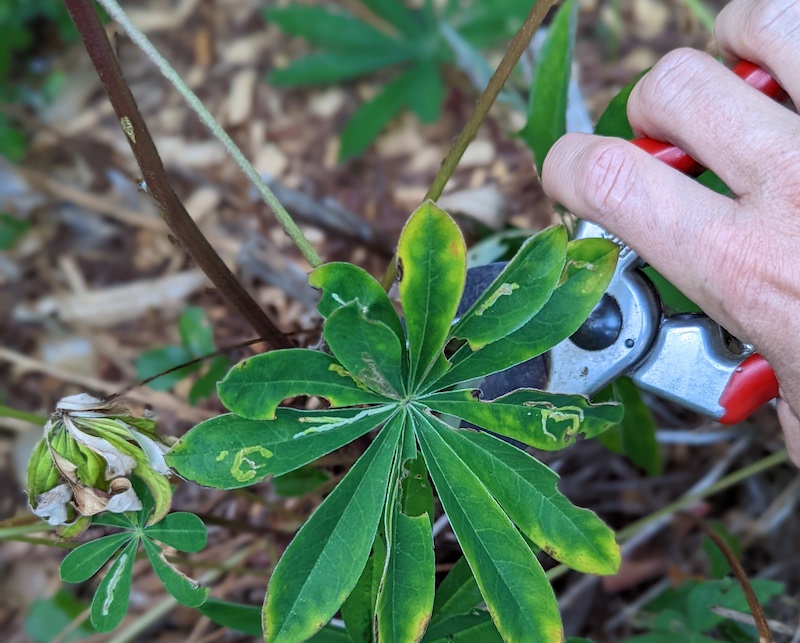
Remember, a well-pruned lupine plant not only looks more attractive but also performs better in terms of blooming and overall health.
Supporting Lupine Flowers as They Grow
Supporting lupine flowers as they grow is crucial to ensure their healthy development and blooming success.
- Support Methods:
- Use bamboo stakes or a plant support ring.
- Prevent bending or breaking of lupine stems as they grow taller.
- Early Placement:
- Set up support early in the growth stages.
- Ensure stability throughout the plant’s life cycle.
- Secure Firmly:
- Anchor the support firmly in the ground.
- Withstand winds and environmental factors.
- Regular Monitoring:
- Adjust support as needed to prevent damage or deformity.
- Keep an eye on lupine flower growth.
By supporting the lupine flowers properly, you can help them thrive and showcase their beauty in your garden or landscape with grace and resilience.
Seasonal Care Tips for Lupine Flowers
:max_bytes(150000):strip_icc()/GettyImages-1135361497-fbe6709ec41442bbb0edec7a1a58aa63.jpg)
When it comes to seasonal care tips for lupine flowers, it’s essential to understand the specific needs of these vibrant plants throughout the year.
Watering: Regularly water your lupine plants during these active growth months. Adequate moisture supports proper development and blooming.
Fertilization: Apply a balanced fertilizer every few weeks to promote healthy growth and vibrant blooms.
Pest and Disease Monitoring: Keep an eye out for signs of pests (like aphids) and diseases (such as powdery mildew). Early detection helps prevent damage.
Deadheading: Remove spent blooms by deadheading. This encourages new growth and prevents energy expenditure on seed production.
Mulching: As temperatures drop, provide a layer of mulch around the base of the plants. This insulates the roots during winter.
By following these guidelines, you’ll ensure your lupine flowers thrive and return beautifully in the next spring. 🌼🌿
How to Overwinter Lupine Flowers
Lupine flowers, with their vibrant blooms, deserve thoughtful care during winter. Here’s how to ensure their health and longevity:
Mulch around the base of lupine plants to insulate the roots. This protects them from freezing during cold spells.
Use organic materials like straw, leaves, or wood chips. Apply a layer about 2-3 inches deep.
Prune back any dead or damaged growth. This encourages new, healthy growth when warmer weather returns.
Focus on removing spent flower stalks and any weak or diseased branches.
Select a sheltered spot for planting lupines. Protection from strong winds and excessive moisture is essential.
Consider placing them near a wall or other structures that provide some cover.
Ensure proper soil drainage. Waterlogged soil can harm lupines during cold weather.
Amend heavy or clayey soil with organic matter to improve drainage.
Add a layer of mulch around the base of the plants before the first frost.
This helps maintain consistent soil temperature and prevents root damage.
Remember, proactive care during winter sets the stage for a vibrant lupine display in spring. 🌼🌿
Creative Uses for Lupine Flowers in Gardens and Landscapes
Lupine flowers are not only beautiful additions to gardens and landscapes but also versatile in their creative uses. These vibrant blooms can be utilized in various ways to enhance the visual appeal of outdoor spaces.

- Cut Flower Arrangements:
- Lupines add color and a touch of nature to indoor spaces.
- Use them in floral arrangements for a vibrant and natural look.
- Dried and Preserved Decorations:
- Dry and preserve lupine flowers for long-lasting home decorations.
- Bring the garden’s beauty indoors.
- Pollinator Attraction:
- Strategically plant lupines in gardens to attract bees and butterflies.
- Contribute to the overall health of the ecosystem.
- Visual Interest in Garden Design:
- Lupines’ vertical growth creates visual impact.
- Define borders and beds, adding structure to garden spaces.
- Color Combinations:
- Their vibrant hues can be used creatively for eye-catching color schemes.
- Add depth and dimension to garden designs.
Enjoy the versatility and beauty of lupine flowers! 🌱🌸🌿 .
Celebrating the Beauty of Lupine Flowers in Your Home
Lupine flowers are a delightful addition to any home garden, offering a burst of vibrant colors and unique beauty.
- Versatile indoor decor: Lupine flowers can be enjoyed both outdoors and indoors, adding a touch of nature’s charm to your living areas.
- Display options: Showcase lupine flowers in a vase on your dining table, as a centerpiece in your living room, or in various corners of your home to brighten up the space with their graceful presence.
- Enhanced aesthetics: Embracing the beauty of lupine flowers in your home elevates the aesthetics and infuses it with a sense of tranquility and freshness.
- Appreciation of nature: Incorporating lupine flowers into your interiors allows you to appreciate nature’s artistry up close and fosters a connection to the natural world within your living environment.
- Soothing ambiance: The presence of lupine flowers creates a soothing ambiance in your living spaces, enhancing the overall atmosphere and bringing a sense of calmness and serenity.
- Highlighting elegance: Celebrate the allure of lupine flowers by highlighting their elegance in various corners of your home, adding a touch of elegance and natural beauty to your indoor decor.
Watch video for more information:
FAQ
Can Lupine flowers attract pollinators to your garden?
Yes, Lupine flowers are known to attract bees, butterflies, and other pollinators with their colorful blooms.
How often should Lupine flowers be watered?
Lupine flowers prefer moist, well-drained soil, so they should be watered consistently to keep the soil evenly moist but not waterlogged.
Are Lupine flowers deer-resistant?
Yes, Lupine flowers are considered deer-resistant due to their bitter taste and toxic properties, making them less appealing to deer.
Can Lupine flowers be grown in pots or containers?
Yes, Lupine flowers can be grown in pots or containers as long as they have enough space for their deep taproots to grow.
Do Lupine flowers require full sun or partial shade?
Lupine flowers prefer full sun, but they can tolerate some light shade, especially in hot climates.
Are Lupine flowers drought-tolerant?
While Lupine flowers prefer consistent moisture, they can tolerate some drought once established, making them a good choice for dry or arid climates.
How long do Lupine flowers bloom for?
Lupine flowers typically bloom from late spring to early summer, with some varieties continuing to bloom throughout the summer months.
Can Lupine flowers be used in cut flower arrangements?
Yes, Lupine flowers make beautiful additions to cut flower arrangements, adding height and color with their tall spikes of blooms.

Studied Agricultural Engineering-Plant Protection at University of California, Davis.
Head of Content writing team at Southelmontehydroponics.com





